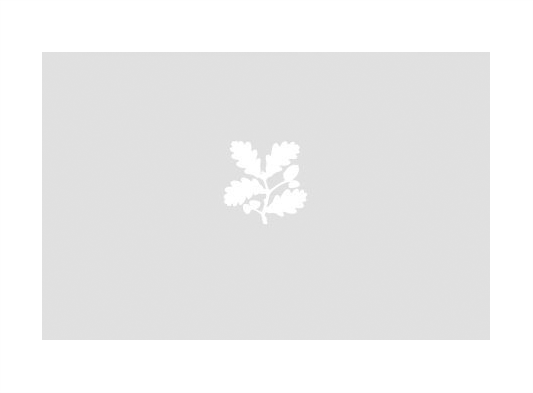The birds of Great-Britain, with their eggs, accurately figured. / By William Lewin.
William Lewin (d.1795).
Category
Books
Date
1790
Materials
Place of origin
London
Collection
Anglesey Abbey, Cambridgeshire
NT 3070914.5
Summary
William Lewin, 'The Birds of Great-Britain, with their Eggs, Accurately Figured', London, 1789–94, 7 volumes. Binding: Gilt-tooled red diced goatskin, with elaborately gilt-tooled spine, green watered-silk endleaves, c.1790.
Full description
Bird books were popular in eighteenth-century England, both as works of scholarship and as splendid collectables for the libraries of wealthy connoisseurs. The naturalist Mark Catesby (1683-1749), born in Essex, originally made his name with a series of voyages to North America, publishing the magnificent ‘Natural History of Carolina, Florida and the Bahama Islands’ in folio between 1729 and 1747. A second edition followed in 1754, edited by the ornithologist George Edwards (1694-1773), who had himself published ‘A Natural History of Uncommon Birds’ (1743), and was a Fellow of the Royal Society and a correspondent of Linnaeus. Lewin’s ‘Birds of Great Britain’ surpassed any of these. Begun in the late 1780s, after more than 20 years of research, it was issued between 1789 and 1794. A pupil of the Irish flower painter Edward Hodgson, William Lewin (1747-95) was born and bought up in the East End of London, and as a young man scraped a living together as a book illustrator and natural history painter. ‘Birds of Great Britain’ is sometimes described as the rarest of all English bird books; the first edition was limited to just 60 copies, as – unlike Catesby and Edwards, whose books were illustrated with hand-coloured copperplates – Lewin painted each plate of every single copy himself, a grand total of 19,380 illustrations for the whole print run. The Fairhaven copy, on vellum, is a spectacular one, in a magnificent neoclassical binding. Originally in the possession of Richard Wellesley, Governor-General of Bengal, and elder brother of the Duke of Wellington, it later belonged to the book collectors Henry Huth and his son Henry Alfred Huth, first treasurer of the Bibliographical society and a member of the Roxburghe Club from 1883 until his death. Fifty of the Huth books were bequeathed to the British Museum, which issued a catalogue of them in 1912; the rest were sold at Sotheby’s between 1911 and 1920. Text adapted from ‘Treasures from Lord Fairhaven’s Library at Anglesey Abbey’, National Trust, 2013.
Bibliographic description
v.5, plates : ill. ; 4to. On vellum. Provenance: Nineteenth-century oval armorial bookplate, gilt on red morocco: Ex Musæo Huthii [i.e.: from the library of Henry Huth (1815-1878)]. Twentieth-century armorial bookplate large variant, signed Badeley 1930: Urban Huttleston Rogers Lord Fairhaven [i.e.: Urban Huttleston Broughton (1896-1966)]. Binding: Nineteenth-century full red diced Russia; Greek key gilt roll to form a border; recessed cords; spines gilt; green spine label: 'Lewin's Birds'; single gilt fillet on board edges; gilt rolled turn-ins (Greek key pattern and circles); gilt textbock edges; green watered-silk endpapers; pale blue silk ribbon marker.
Makers and roles
William Lewin (d.1795)., author
References
Mark Purcell, William Hale and David Person, Treasures from Lord Fairhaven’s Library at Anglesey Abbey, Swindon: National Trust; London: Scala Arts & Heritage Publishers, 2013., pp. 70-1
